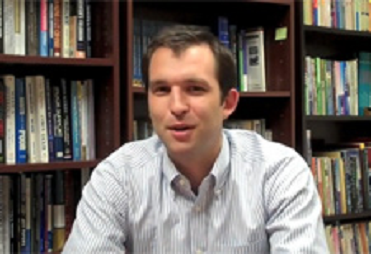What Did You Do This Summer?

This summer, Ash Center Fellows in Innovation rolled up their sleeves and got to work, supporting unique education, government, and service initiatives in cities around the country.
Sunlight is the Best Disinfectant
Alejandra Vallejos Morales, HKS MPA 2011, explored data transparency in government this summer, offering research support to Washington, D.C.’s Office of the Chief Technology Officer. The Office’s Data Feeds Program is the nation’s first government initiative to make virtually all current city government data available to citizens. By accessing any of the program’s 430 data feeds through the internet, citizens can gain up-to-date information about everything from parking availability to crime statistics in their neighborhoods.
Quoting Louis Brandeis’ famous adage, “Sunlight is said to be the best of disinfectants,” Morales explained that while the program has exposed data performance to public criticism, such transparency has created an environment of self-improvement and accountability for civic offices. “In Latin America where I’m from, people come to the streets to complain,” said Morales. “But in e-government, we create streets for people to participate in 24/7. There’s less mess and real change happens.”
During her fellowship, Morales researched new opportunities for replicating the Data Feeds Program in other jurisdictions around the world and proposed creative ideas for interpreting existing data feeds to engage citizens. Her recommendations included repurposing the Department of Motor Vehicles’ organ donor information for larger public campaigns to increase donor rates, and creative mapping tools for presenting information on agencies and departments interested in serving as a backdrop for films in the D.C. area.
Using Data to Tell a Story
Lindsay Berger, MPP 2011, worked for San Francisco Mayor Newsom’s Educational Advisor on key issues related to post-secondary education. “Many of last year’s core classes emphasized data analysis,” she said. “This summer taught me how important it is to use data to tell a story, making it both accessible to different interest groups and using it to hold the city accountable.”
As a former high school teacher, Berger researched what she calls “the missing middle”—the large cohort of high school graduates unprepared for college. As part of a new partnership, the city is working to drive up high school graduation rates, increase college enrollment, and improve college completion rates. Working with key stakeholders, education nonprofits, and city agencies, Berger aided in the creation of a report card that will be used to measure key indicators of success towards these goals including pre-K performance and 4th and 8th grade math and science outcomes.
“It was exciting to see how different city agencies work together to find common ground,” said Berger. “We were able to align the metrics we are tracking while really trying to cultivate a cradle to career philosophy in the city.”
Berger also investigated how for-profit universities are affecting their student populations both in San Francisco and the country at large. Berger’s research addressed how for-profits often attract a larger pool of low-income students enticed by fast enrollments and untraditional learning environments. While the tuition costs of for-profit universities can be upwards of seven times those of nonprofit community colleges, graduation rates are lower. Moreover, for-profit universities currently receive more federal aid than nonprofit universities, funds that critics argue is used more for expensive marketing campaigns than curriculum development.
Teacher Absenteeism & City-Wide Service
While also focusing on education policy, Thackston Lundy, HKS MPP 2011, spent his summer addressing the challenges of teacher absenteeism in Pittsburgh Public Schools. The city struggles with an absenteeism rate well above the national average. He proposed creative incentives and policy solutions for keeping teachers in the classroom, especially during the stressful end of semester rush. Lundy also worked on revamping the substitute hiring process and providing professional development support to nurture the cohort of high quality substitutes into full-time teachers.
After his two months in Pittsburgh, Lundy traveled south for a four-week fellowship in New Orleans supporting Mayor Landrieu’s city-wide service initiative. Lundy explored how to connect financial resources with eager volunteers. His project resulted in a series of grants for community groups to apply and secure funding for service projects centered on youth nutrition, literacy, and arts education.
For Lundy, working in two unique cities taught him much about how to innovate within different contexts. Pittsburgh’s gradual rebirth from rustbelt to high tech hub is in direct contrast to New Orleans dramatic overhaul after the devastation of Hurricane Katrina.
“But New Orleans and Pittsburgh are pretty similar—comparable in size as cities of neighborhoods, made up of intensely proud citizens, and focused on rebuilding and growing,” said Lundy. “I think the next phase of education reform in the U.S. will focus more on smaller cities like Pittsburgh and New Orleans where the challenges are as great, just on a different scale.”
Learn more about the Ash Center’s resources and fellowships for students here»